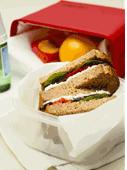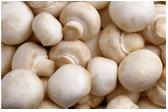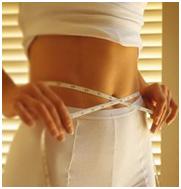Though it is just a small gland that sits just below the Adam’s apple, the thyroid has a huge responsibility for maintaining many important bodily functions. Through its secretion of hormones, the thyroid affects the metabolism, cholesterol levels, heart rate, eyesight, skin, and memory. But… in order to manufacture a healthy amount of hormones, the gland needs to be in good working order. Celtic sea salt, a course gray salt found along the coast of Brittany, France, is an unrefined salt that contains over 80 minerals, trace minerals, and other essential elements. Due to its high mineral content, it can work effectively with the thyroid, providing healthful nutrients to the body.
Abundance of Minerals
Dr. David Brownstein in his online article, “Shattering the Myths about One of Nature’s Necessary Nutrients,” speaks about Celtic sea salt’s high mineral and trace mineral content, as opposed to table salt’s mere two elements: sodium and chloride. He states that the use of unrefined salt provides a great benefit for optimum health. All Natural Information asserts that Celtic sea salt is able to eliminate excess acidity in cells, particularly the brain, while also balancing sugar levels and generating energy in the body as it works in conjunction with the thyroid gland. Celtic sea salt is also a great addition to the diet for its iodine content, which helps thyroid conditions like hypothyroidism.
Magnesium Salts
The presence of magnesium bromide and magnesium chloride boosts the metabolic processes by fortifying the thyroid. According to All Natural Information, magnesium salts also help to drain excess sodium from the body, helping to address edema, high blood pressure, and other problems associated with high levels of sodium.
Additive Free
Because Celtic sea salt is free of additives and chemicals, it provides the body with the maximum benefit inherent in naturally occurring salt, according to Thyroid Guide. Celtic sea salt is sold without being processed, meaning that there is no application of heat, which normally removes minerals. Commercial table salt on the other hand, is the result of high-heat drying in order to keep salt granules from clumping together, with iodine often added after processing. Because the magnesium is removed from commercial table salt, the mineral is not available to perform its function as a nerve and brain cell stimulator, nor for metabolizing fats and sugars. Celtic sea salt, however, contains naturally occurring magnesium along with only 82% sodium chloride, as opposed to the 98% found in commercial salt.
Note: Be sure to consult with your health-care provider before embarking on a Celtic sea salt protocol, especially if you are suffering from kidney problems.
For information on the purity of sea salt given our polluted waters, here is an excellent response on the subject: http://www.saltnews.com/2010/08/on-the-purity-of-sea-salt/comment-page-1/#comment-24945
For information on the purity of sea salt given our polluted waters, here is an excellent response on the subject: http://www.saltnews.com/2010/08/on-the-purity-of-sea-salt/comment-page-1/#comment-24945





























